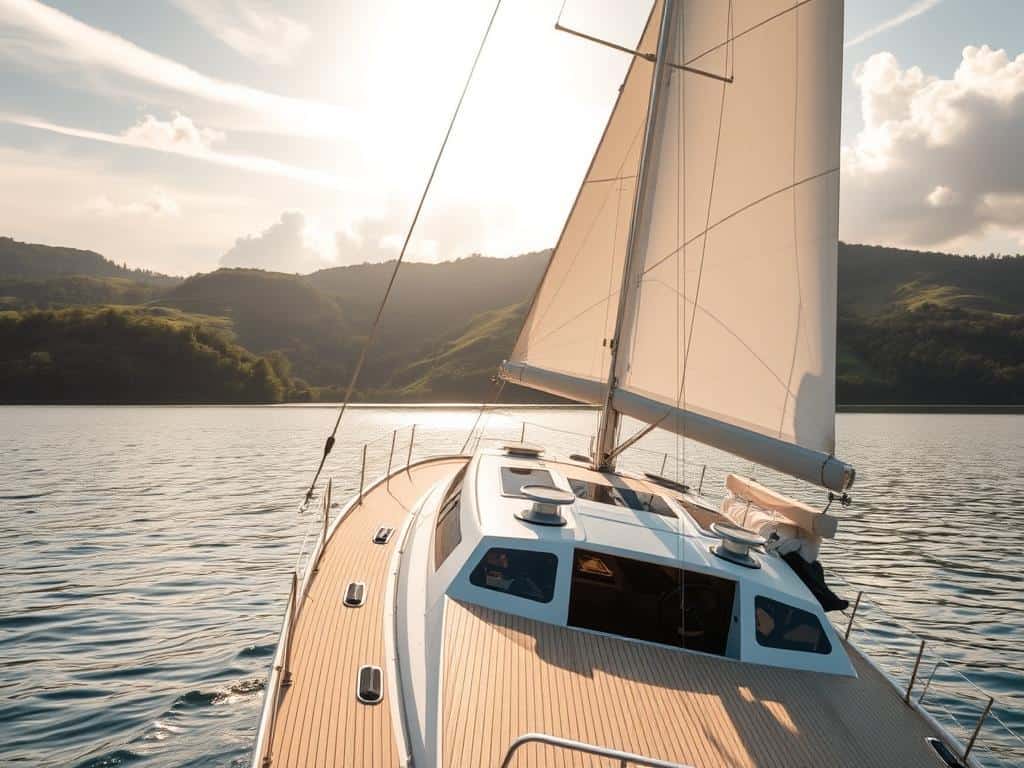My first time in watercraft trading was on a sunny weekend. I was standing on the docks, excited to buy my first boat. The thrill of the open waters was short-lived, as I quickly got lost in the marine market’s complexity.
I learned that knowing how to buy a boat and understanding nautical investments is key. This article shares insights from over 30 years in the industry. It draws wisdom from L&M Marine and Day Break Marina. My goal is to make watercraft trading easier for you, turning nerves into excitement as we explore marine startups and international opportunities.
Key Takeaways
- Understanding the basics of watercraft trading is essential for buyers.
- Having a clear budget helps make informed decisions.
- Knowing different types of watercraft expands your options.
- Thorough inspections are vital when buying used boats.
- Nautical investments can add long-term value and enjoyment.
- Sea trials offer insights into a watercraft’s performance.
Understanding the Basics of Watercraft Trading
Starting in watercraft trading means building a strong base. First, I need to know my watercraft budget. This is key for making choices. Knowing my budget helps narrow down what I can afford.
This budget includes the cost of buying the boat and the ongoing expenses. Many forget about these costs, which can cause financial trouble later.
Setting Your Budget for a New Purchase
When it comes to boat financing, I aim for boats under 10 years old with less than 500 hours. This helps avoid reliability problems and makes financing easier. I also compare prices and conditions of similar boats to make a smart choice.
Types of Watercraft Available
Exploring the different types of boats helps me find what I like. There are many options, from personal watercraft to yachts. Each type is for a specific use, like fun boating or fishing.
Knowing what each type offers helps me pick the right boat for my needs.

Inspection and Evaluation Process in Watercraft Trading
Buying a used boat requires a detailed boat inspection. It starts with checking the boat’s age, hours used, and condition. I look at the hull, electrical parts, and maintenance records. Using NADA Guides helps me understand the boat’s value.
If I’m not familiar with boat mechanics, getting help is smart. This way, I can spot any issues.
Condition Assessment of Used Boats
Assessing a used boat’s condition is key. I check the hull for cracks and the mechanical parts for function. This avoids unexpected repairs later.
I also inspect every part, from plumbing to safety gear. Knowing the maintenance history helps me see if the boat fits my needs.
Conducting Sea Trials
Sea trials are essential in evaluating a boat. They let me see how the boat performs in its natural setting. I check its handling, engine, and stability during different moves.
Dealers like L&M Marine and Day Break Marina support this hands-on testing. Before the trial, talking to the seller about past issues helps me understand the boat better.
Conclusion
Reflecting on watercraft trading, I see it’s not too hard. Having a solid budget and knowing the different types of watercraft helps a lot. The guide I followed gave me a strong base to make good choices.
Checking out used boats and doing sea trials are key steps. They help me make sure I’m investing wisely. Getting advice from experts makes me more confident in my choices.
This guide has given me the courage to dive into watercraft trading. Whether for fun or as an investment, I’m ready. With the right strategy, I can handle the marine market and find what I’m looking for.



